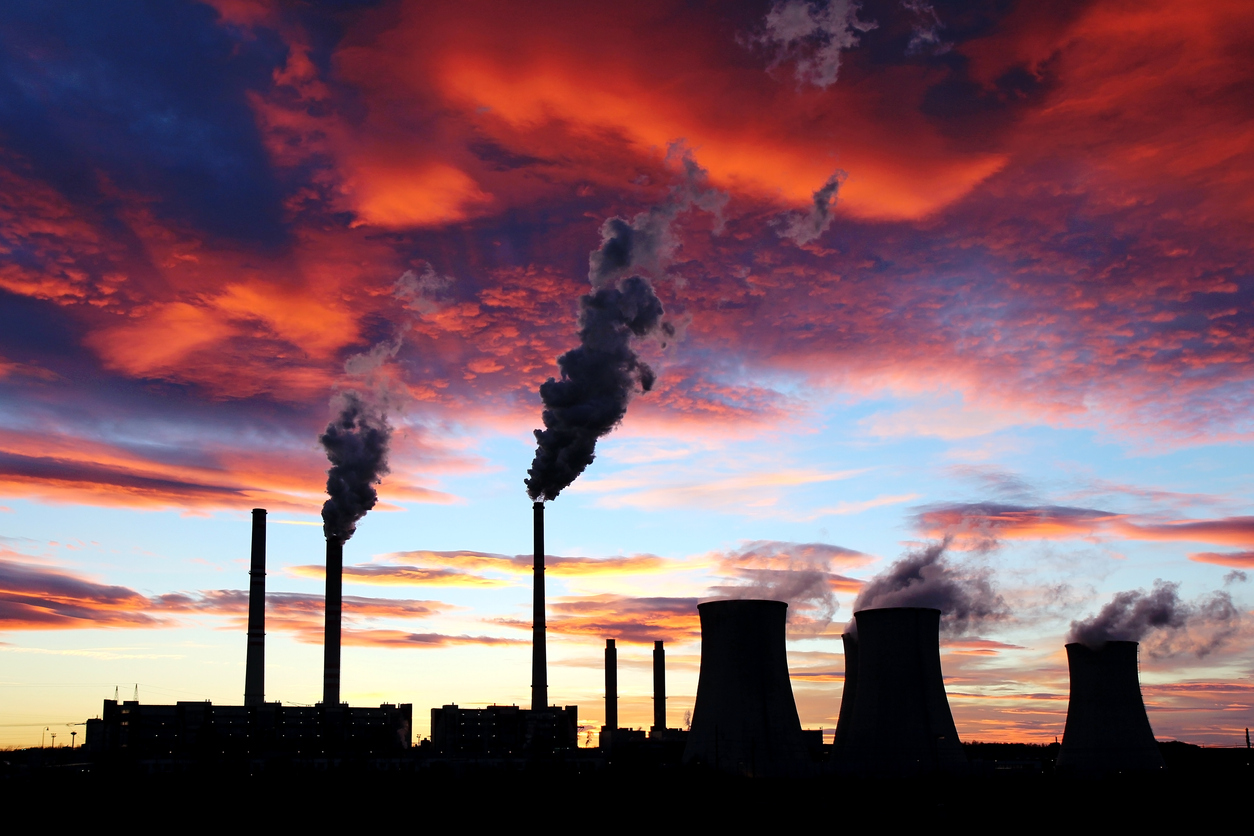The UK Government has been promoting its work in cutting harmful greenhouse gas emissions in recent days, with ministers highlighting significant reductions on social media.
In a post on X, Claire Coutinho, the government’s energy security and net zero secretary, claimed the UK had to cut its emissions in half, while simultaneously expanding the economy.
The UK has “halved emissions” and grown “economy by 80 per cent”.
Claire Coutinho MP
Ferret Fact Service looked at this claim and found it Mostly True.

Evidence
Has the UK halved its emissions?
Cutting emissions is essential for the UK to meet its targets for achieving net-zero, where there is a balance between the amount of greenhouse gases a country emits and those it removes from the atmosphere.
When Claire Coutinho and the UK Government refer to decreases in greenhouse gas emissions, they are using a benchmark of 1990. This is the measurement agreed by governments around the world who signed the Kyoto protocol, the first significant commitment to reduce emissions levels.
So, the claim refers to a reduction of 50 per cent since 1990. The latest statistics on the UK’s emissions cover up to the end of 2022.
It is accurate to say that, according to statistics, the UK has cut its greenhouse gas emissions in half since 1990. This was originally achieved in 2020, attributed to a fall in emissions during the Covid-19 restrictions. After an increase in 2021, emissions were reduced again in 2022.
In 1990, UK greenhouse gas emissions were 812.4 million tonnes of carbon dioxide equivalent (MtCO2). By 2022, this has fallen to 406.2, which is 50 per cent lower.
About half of the reduction has taken place since 2010, when the Conservative Party came to power. The majority of the reduction has come from the energy sector and industry.
How have emissions been reduced?
Between 1990 and 2022 greenhouse gas emissions from producing energy reduced by 73 per cent. This is down to the change in energy production away from fossil fuels, particularly coal, which has occurred in the last 30 years. However, a significant proportion of the UK’s energy is still provided by gas.
While the UK’s energy used to be primarily generated (65 per cent) in coal power stations, in 2022 this made up just three per cent of fuel used.
The UK’s industrial emissions reduced by 63 per cent between 1990 and 2022. This is primarily a result of the reduction of industry in general, with fewer people employed in the sector and a general shift in the UK economy from manufacturing to services.
Another factor to the UK’s emissions reduction is Covid-19. The latest figures cover up to 2022, when the impact of pandemic restrictions was still being felt.
For example, the emissions from transport in the UK were 12 per cent lower in 2022 than in 1990, while this sector’s emissions had only reduced three per cent up to 2019.
What about supply chain emissions?
Much of the criticism of the UK’s net zero targets is the concept of ‘outsourcing’ emissions. This means that some countries are able to reduce their territorial carbon emissions by reducing things like manufacturing within their borders, but not reducing the impact of their consumption on overall greenhouse gas put into the atmosphere across the world.
So, for example, a lot of the manufacturing which was once produced within the UK’s borders now takes place in India or China, and is then shipped across the world for sale within the UK.
The emissions in this production would count towards China and India’s emissions rather than the UK’s, even though this is driven by UK consumption and often directed by British companies.
What’s happened to the UK economy since 1990?
When politicians talk about growing the economy, they are often referring to increases in the gross domestic product.
Gross domestic product, or GDP, is the most common measure of the size and strength of the economy.
It attempts to estimate the value of all the goods and services produced within a country, across a certain time period.
You will see GDP measured in a few different ways, but so-called ‘real terms’ GDP gives a more accurate picture of changes to the economy over a longer period, because it takes into account the changes in how much things cost each year.
According to the latest data from the Office For National Statistics, the UK’s GDP in real terms in the third quarter of 2023 was 79 per cent higher than it was in the first three months of 1990.
Since 2010, when the Conservatives took office at Westminster, the economy has increased about 22 per cent on the same measure. In recent years, GDP growth has reduced, and the economy has contracted in some periods including the latest statistics covering the third quarter of 2023.
Ferret Fact Service verdict: Mostly True
Claire Coutinho’s claim about the UK’s reduction in emissions and economic growth is accurate, but leaves out some important context.
The reduction in emissions has taken place consistently since 1990, primarily as a result of changes to the UK’s energy supply and reduction in manufacturing sector. The UK’s emissions targets do not account for supply chain emissions outside of the UK’s borders, such as emissions created by outsourced manufacturing.
The UK’s economy has also grown significantly since 1990. The majority of that growth took place before the Conservatives gained power in 2010, and in recent years growth has stalled.

Ferret Fact Service (FFS) is a non-partisan fact checker, and signatory to the International Fact-Checking Network fact-checkers’ code of principles.
All the sources used in our checks are publicly available and the FFS fact-checking methodology can be viewed here.
Want to suggest a fact check?
Email us at factcheck@theferret.scot or join our Facebook group.
Photo credit: iStock/kodda














